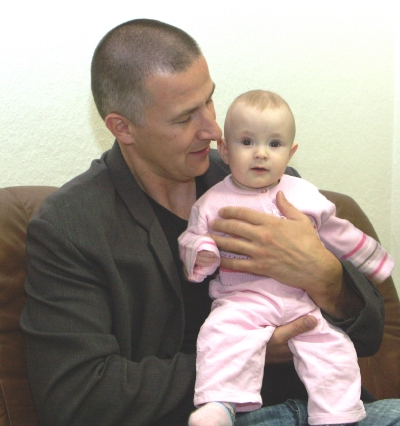Baby Miriam's mother lost her amniotic fluid in the 20th week of pregnancy, giving the baby a very slim chance of surviving birth and, even if she had, because her lungs had stopped growing, she would probably have suffocated shortly afterward.
Doctors at Bonn Univer-sity Clinic saved Miriam's life with surgery in the womb that stimulated lung growth - the first time this method has been used worldwide in a case of premature rupture of the fetal membrane. The baby is now one year old and very healthy. The doctors will report the case study in this month's Fetal Diagnosis and Therapy.

Lori, the mother, already had three children and this fourth pregnancy was the third instance of a premature rupture of the fetal membrane, though none of the others had been this early. A rupture before the 22nd week of pregnancy results in the child being constricted due to the lack of its protective liquid cushion and the organs pressing on the lung. Therefore the lung is either much too small at birth or cannot enrich the blood with oxygen. Every second baby suffocates after birth because of it.
Worse, the child would now be unprotected against germs in the womb, and the danger of a life-threatening infection becomes very high. For this reason the pregnancy is usually aborted after rupture at such an early stage.
But Miriam's parents did not want to give up. "My husband and me prayed and put our faith in God. We were prepared to do anything for our child. Miracles do happen," the 29 year-old mother says.
When Professor Thomas Kohl, Head of the German Centre of Foetal Surgery & Minimally Invasive Therapy at Bonn University Clinic, offered the parents a risky prenatal operation, they took it, knowing it was experimental and the outcome was uncertain.
"But here we were dealing with a healthy child and it was a question of significantly increasing its chances of survival," Professor Kohl says.
'Lungs rose like yeast cake'
During the operation, the fetal surgeons inserted the operating device, about the size of a ballpoint pen, into the fetal membranes via a small opening in the mother's stomach. They carefully moved the foetoscope -- assisted by a camera and ultrasonic apparatus -- via the mouth and into the trachea of the unborn baby.
There a miniature balloon was inflated, blocking the respiratory channel so that the fluid which was continuously produced by the prenatal lung cannot drain away. That way the fluid pressure built up stimulated lung growth.
Miriam's case was the first one where Professor Kohl also used the protein serum albumin, which increases the amount of water collected in the lung and amplifies the effect of the latex balloon.
"Our little patient's lungs rose like yeast cake. The balloon stayed in the lungs for five days and during this period the volume of the lungs almost doubled," Professor Kohl says. During the whole process, gynecologists and midwives provided intensive care for the mother and child.
The baby was born in the 33rd week of pregnancy and then premature baby specialists of the Neonatological Intensive Care Department (Neonatologische Intensivpflegestation, NIPS) took over the postnatal care. "The prenatal operation only takes one or two hours. Competent follow-up care of the children after birth is at least as important for their healthy survival," Professor Kohl emphasises.
For the parents Miriam is a little miracle. Two weeks before the baby was due to be born, the happy parents were able to take home their daughter, where she has developed normally ever since.
"It was a hard time. We were torn between anxiety and hope. But we are incredibly happy to have made this decision in spite of all the unknowns," Heinrich, the 29-year-old father says.
The team in Bonn now intends to focus on testing the life-saving potential of the new method of treatment on future patients with premature rupture of the fetal membrane.






Comments